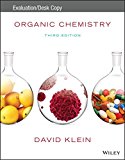
(a)
Interpretation:
The reagent for the given transformation should be identified.
Concept introduction:
9-BBN (9-Borabicyclo[3.3.1]nonane) or diborane is used for the hydroboration of
The role of dilute sulfuric acid is used for the hydration of alkene in
The oxymercuration reaction is an electrophilic addition reaction, an alkene undergoes oxymercuration and forms neutral alcohol.
Anti-Markovnikov’s rule: unsymmetrical alkene reacts with hydrogen halide, halide ions (negative part) goes to the less substitution position of carbon-carbon double bond which provides
Markovnikov addition: unsymmetrical alkene reacts with hydrogen halide, halide ions (negative part) goes to the more substitution position of carbon-carbon double bond which provides alkyl halides.
(b)
Interpretation:
The reagent for the given transformation should be identified.
Concept introduction:
9-BBN (9-Borabicyclo[3.3.1]nonane) or diborane is used for the hydroboration of alkene. Boron addition to the double bond and subsequent oxidation of the new formed borane yields anti-Markovnikov alcohols.
The role of dilute sulfuric acid is used for the hydration of alkene in organic synthesis.
The oxymercuration reaction is an electrophilic addition reaction, an alkene undergoes oxymercuration and forms neutral alcohol.
Anti-Markovnikov’s rule: unsymmetrical alkene reacts with hydrogen halide, halide ions (negative part) goes to the less substitution position of carbon-carbon double bond which provides alkyl halides.
Markovnikov addition: unsymmetrical alkene reacts with hydrogen halide, halide ions (negative part) goes to the more substitution position of carbon-carbon double bond which provides alkyl halides.
(c)
Interpretation:
The reagent for the given transformation should be identified.
Concept introduction:
9-BBN (9-Borabicyclo[3.3.1]nonane) or diborane is used for the hydroboration of alkene. Boron addition to the double bond and subsequent oxidation of the new formed borane yields anti-Markovnikov alcohols.
The role of dilute sulfuric acid is used for the hydration of alkene in organic synthesis.
The oxymercuration reaction is an electrophilic addition reaction, an alkene undergoes oxymercuration and forms neutral alcohol.
Anti-Markovnikov’s rule: unsymmetrical alkene reacts with hydrogen halide, halide ions (negative part) goes to the less substitution position of carbon-carbon double bond which provides alkyl halides.
Markovnikov addition: unsymmetrical alkene reacts with hydrogen halide, halide ions (negative part) goes to the more substitution position of carbon-carbon double bond which provides alkyl halides.
Want to see the full answer?
Check out a sample textbook solution
Chapter 12 Solutions
Organic Chemistry 3rd.ed. Klein Evaluation/desk Copy
 ChemistryChemistryISBN:9781305957404Author:Steven S. Zumdahl, Susan A. Zumdahl, Donald J. DeCostePublisher:Cengage Learning
ChemistryChemistryISBN:9781305957404Author:Steven S. Zumdahl, Susan A. Zumdahl, Donald J. DeCostePublisher:Cengage Learning ChemistryChemistryISBN:9781259911156Author:Raymond Chang Dr., Jason Overby ProfessorPublisher:McGraw-Hill Education
ChemistryChemistryISBN:9781259911156Author:Raymond Chang Dr., Jason Overby ProfessorPublisher:McGraw-Hill Education Principles of Instrumental AnalysisChemistryISBN:9781305577213Author:Douglas A. Skoog, F. James Holler, Stanley R. CrouchPublisher:Cengage Learning
Principles of Instrumental AnalysisChemistryISBN:9781305577213Author:Douglas A. Skoog, F. James Holler, Stanley R. CrouchPublisher:Cengage Learning Organic ChemistryChemistryISBN:9780078021558Author:Janice Gorzynski Smith Dr.Publisher:McGraw-Hill Education
Organic ChemistryChemistryISBN:9780078021558Author:Janice Gorzynski Smith Dr.Publisher:McGraw-Hill Education Chemistry: Principles and ReactionsChemistryISBN:9781305079373Author:William L. Masterton, Cecile N. HurleyPublisher:Cengage Learning
Chemistry: Principles and ReactionsChemistryISBN:9781305079373Author:William L. Masterton, Cecile N. HurleyPublisher:Cengage Learning Elementary Principles of Chemical Processes, Bind...ChemistryISBN:9781118431221Author:Richard M. Felder, Ronald W. Rousseau, Lisa G. BullardPublisher:WILEY
Elementary Principles of Chemical Processes, Bind...ChemistryISBN:9781118431221Author:Richard M. Felder, Ronald W. Rousseau, Lisa G. BullardPublisher:WILEY





